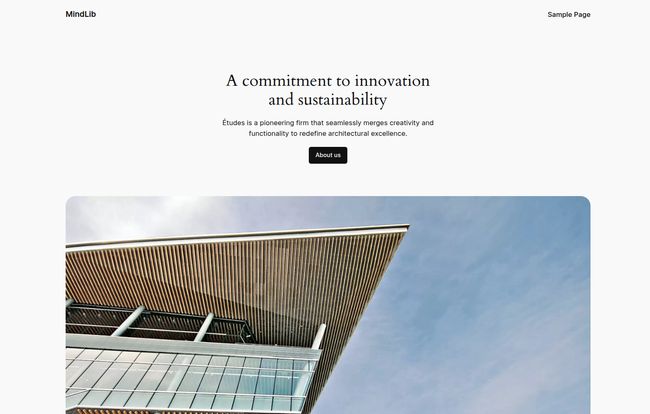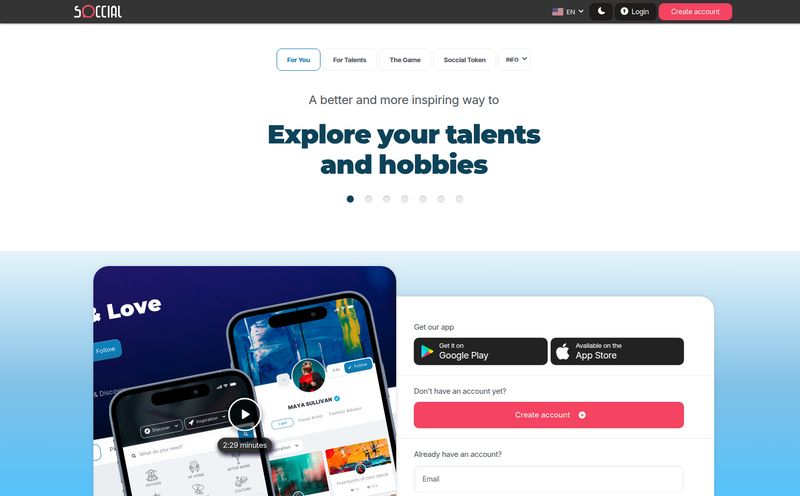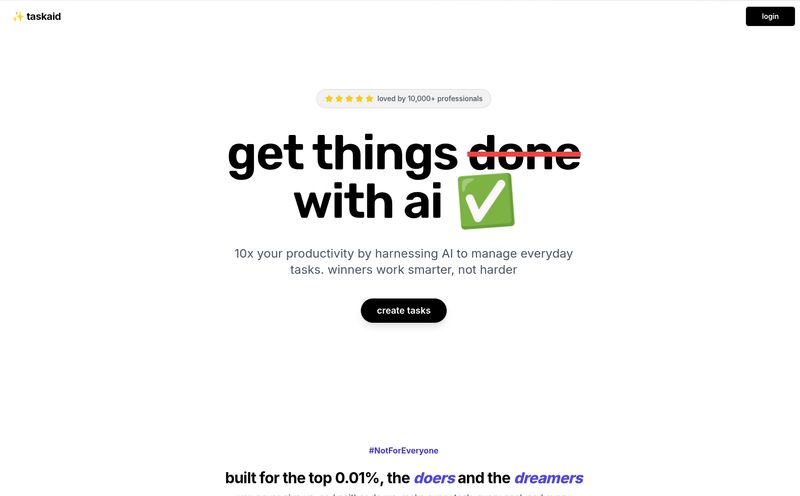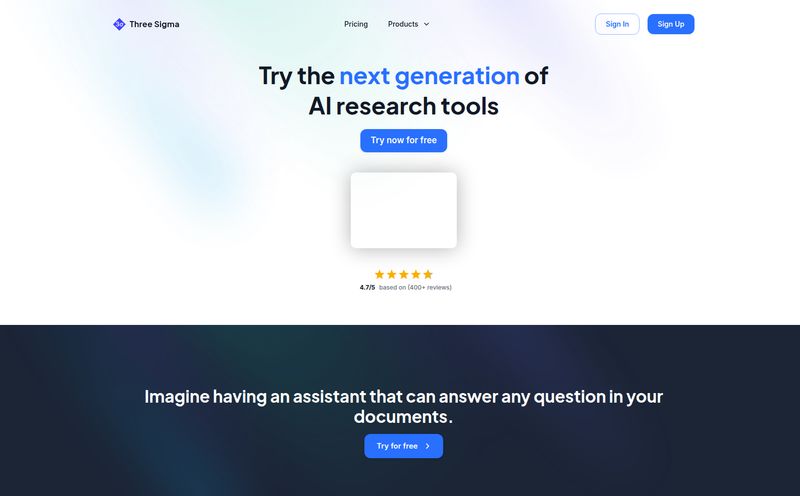If your brain is anything like mine, it’s a chaotic browser with 1,000 tabs open at all times. A brilliant idea for a marketing campaign is fighting for space with a grocery list, a half-remembered quote from a podcast, and that weird fact about otters you learned yesterday. For years, I've been on a quest for the perfect “second brain,” a digital space to dump all this stuff so it doesn’t get lost in the noise.
I’ve tried them all. The big, powerful database apps that feel like you need a PhD to operate them. The minimalist note-takers that are too simple. Most of them share one fatal flaw: they are an absolute pain to use on a phone. And where do most of my brilliant-but-fleeting ideas strike? You guessed it. When I'm away from my desk.
So when I stumbled upon MindLib, I was skeptical but intrigued. It calls itself a graph-based Personal Knowledge Management (PKM) tool, optimized for mobile. A big claim. But after kicking the tires for a while, I’m starting to think it might just be the solution I, and maybe you, have been looking for.

Visit mindlib
So, What is MindLib, Really?
Forget clunky folders and rigid hierarchies. Imagine your knowledge not as a filing cabinet, but as a living, breathing garden. That's MindLib. It's a graph-based PKM tool, which is a fancy way of saying it connects your ideas like neurons in a brain. Every note, every thought, every snippet of information can be linked to any other, creating a web of understanding that grows with you.
It’s built from the ground up to work on your phone, designed to capture ideas the moment they strike. You can toss in a thought, link it to a project you were thinking about last week, and let the app's AI help you find related concepts. It’s less about storing files and more about cultivating understanding.
The Features That Actually Matter
A lot of apps boast a million features you'll never touch. MindLib feels different. It focuses on a few core things and does them exceptionally well. Here’s what stood out to me.
AI-Powered Mind Mapping on the Fly
This is the magic sauce. You start a mind map, and as you add ideas, the built-in AI starts suggesting connections and even new branches. It’s like having a brainstorming partner in your pocket. I was mapping out a content strategy, and it started suggesting related keywords and audience segments I hadn’t even considered. It’s not just retrieving information; it's actively helping you expand it. And with Wikidata suggestions, it can even pull in and link to external, factual information to flesh out your thoughts. Pretty neat.
A True Interconnected Network of Ideas
This isn't just about one mind map. It's about a network of them. Your thoughts on SEO can link directly to a specific note in your mind map about a client project, which can then link to a random idea you had about email marketing. This creates a rich, navigable web of your own knowledge. You start to see connections you would have missed if your notes were just sitting in separate folders. It’s the closest thing I’ve seen to a digital replica of how our minds actually work—associatively and chaotically.
Your Personal Knowledge AI Chatbot
Okay, this is cool. MindLib has an AI Chat feature where you can literally have a conversation with your own knowledge base. You can ask it things like, “What were my main thoughts on CPC optimization last month?” or “Summarize my notes about the new project.” The AI scans your interconnected notes and gives you a coherent answer. It’s a powerful way to review and synthesize your own ideas without having to manually dig through everything.
My Honest Take: The Good, The Bad, and The... AI
No tool is perfect, right? After spending some quality time with MindLib, here's my unfiltered take. The mobile-first design is a genuine game-changer. Being able to quickly add a note via the share sheet from an article or a tweet without a dozen clicks is fantastic. And the real-time sync across devices works flawlessly.
However, there are a couple of things to keep in mind. Some people might find that as their knowledge base grows into hundreds or thousands of nodes, managing that sheer complexity on a small phone screen could become a challenge. It's optimized for mobile input and quick lookups, but for a massive reorganization, you might still want a bigger screen. Also, and this is more of a philosophical point, you have to be careful not to become too reliant on the AI. It’s a brilliant assistant, but it's important to still do the critical thinking yourself. The AI is a tool to augment your thought, not replace it.
Let's Talk About Pricing (It's Almost a Typo)
This is where my jaw kinda dropped. In an era where every decent SaaS tool seems to start at $10 a month, MindLib's pricing is a breath of fresh air. Here’s the breakdown:
| Plan | Cost | Details |
|---|---|---|
| Free | $0 | Full functionality for up to 100 pieces of information. |
| Monthly | $0.99 | Unlimited information, full functionality. |
| Yearly | $8.99 | Unlimited information, full functionality for a whole year. |
Yes, you read that right. Less than a dollar a month for the full, unlimited version. The free tier is generous enough to let you properly test it out, and the yearly plan costs less than a single month of many competing services. In my opinion, this pricing makes it a complete no-brainer to try.
Who Should Actually Use MindLib?
So, is this the one tool to rule them all? Probably not. And that's okay. MindLib knows exactly what it is. I think it’s perfect for:
- Students and Researchers: Anyone who needs to connect concepts from different lectures and papers will find the graph structure incredibly powerful.
- Writers and Content Creators: For brainstorming, outlining articles, and keeping track of story ideas, it's a dream.
- Busy Professionals: If you're always in meetings or on the go, the mobile-first design is a lifesaver for capturing thoughts before they vanish.
- Anyone new to PKM: It’s far more intuitive than some of the behemoth apps out there, making it a great entry point into building a second brain.
If you're someone who needs super-complex databases, project management tables, and team collaboration features all in one place, you might still lean on a tool like Notion. But for personal knowledge management, especially for people who think and live on their phones, MindLib is a seriously compelling option.
Final Thoughts
I started this journey looking for a simple bucket to catch my fleeting thoughts. What I found in MindLib is something more. It’s a tool that doesn’t just store information, but helps you connect it, grow it, and understand it better. It successfully bridges the gap between powerful graph-based thinking and the reality of a mobile-first world.
Is it the ultimate solution that will finally organize my entire life? Probably not. But it’s the best tool I’ve found for taming the chaos in my head, one idea at a time. And at its price point, it’s one of the easiest recommendations I’ve made all year.
Frequently Asked Questions
What is a graph-based PKM?
Instead of using folders, a graph-based tool connects individual notes or pieces of information directly to each other. This creates a web-like structure that mimics how your brain makes associations, allowing for more flexible and insightful connections between ideas.
Is MindLib good for beginners?
I'd say so. While the concept of a 'graph' can sound intimidating, the user interface is clean and the AI assistance helps you get started quickly. It's much less overwhelming than many other advanced PKM tools, making it a solid choice for someone just starting to build a second brain.
How does the AI in MindLib work?
The AI serves two main functions. First, in mind mapping, it suggests new ideas and connections based on the context of what you're writing. Second, the AI Chat feature allows you to query your own knowledge base in natural language, asking it to summarize topics or find specific information you've stored.
Can I import my data from other apps?
Yes, MindLib supports the OPML (Outline Processor Markup Language) format. This is a common format used by many mind mapping and outliner apps, so there's a good chance you can export from your current tool and import your existing maps into MindLib.
Is the free version of MindLib actually useful?
Absolutely. With a limit of 100 'pieces of information' (or nodes), it's more than enough to get a real feel for the app's entire feature set. You can build several detailed mind maps and test the AI before deciding if you need the unlimited version.
What devices does MindLib sync with?
MindLib offers real-time synchronization across multiple devices. It is primarily designed for mobile (iOS and Android) but your knowledge base can be accessed and synced on any device where you have the app installed.



